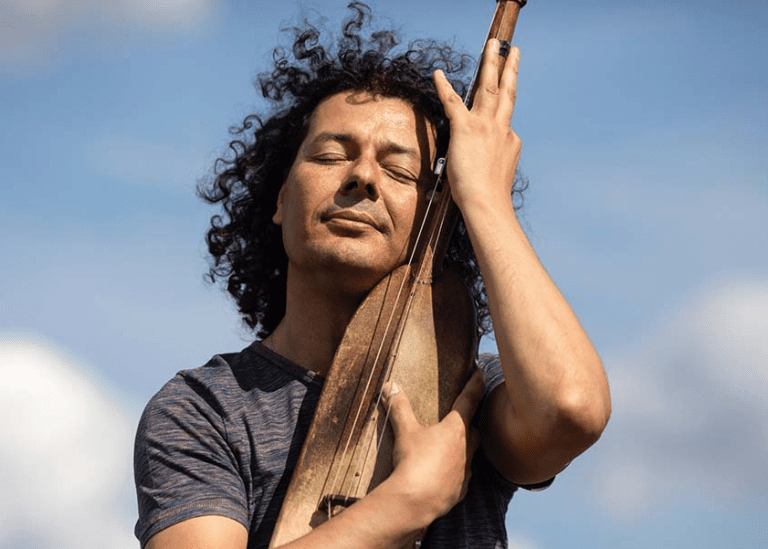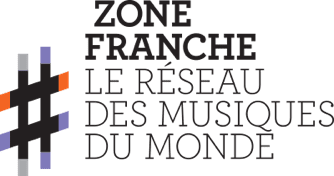Scared of relapsing into the same old daily routine of commuting and work? September is here with its share of stress and new projects. Here are some tips for rising above it and taking a deep breath to help you face the season in better shape.
Music appeared 35,000 years ago. Equipped with rudimentary instruments – buffalo rhombus from hunting – men and women would play, dance, sing and tap to express their emotions, religious feelings and chant incantations intended to interact with natural phenomena they barely understood. Music, or rather the vibrations they created, was a way to lead them towards a spiritual trance. Today, in our unquestionably secular society, we no longer express our emotions using anything as rudimentary as a buffalo rhombus. But are we so far from removed from that prehistoric era? And what bridges still exist between today and this spiritual world, well-being and world music?
Shamanic trance or world music, it is all the same
Today, thanks to a variety of modern techniques, we can move from one state of consciousness to another. States of relaxation, trance, ecstasy and meditation can be induced, among other things, by shamanic sessions or brought on by Buddhist monks. In Western countries, this occurs primarily through sophrology, hypnosis, mindfulness meditation and many other disciplines. Sound yoga and music therapy are also a part of this world of well-being.
Some yoga teachers currently use instruments meant to vibrate at 440 megahertz, the frequency of the human body. Other wellness professionals even argue that 432 megahertz is the fashionable frequency of “universe and happiness”. World music musicians tend not to be so familiar with radio waves, but do have the gift of relaxing, soothing our minds and putting us into a trance.
The body, our first music instrument
“Music is simply the laws of physics used for different purposes,” says Mika de Brito, a yoga teacher who gives classes with Schubert’s serenade, Berlin electro or hang drum playing in the background. And, as described by the Moroccan singer, Oum, when she is on stage, it is primarily at the physical level that things happen. Vibrations pass through her body: she is in another dimension. It is no longer about intellect but about feelings, then emotions. She and her musicians form a “little energy collective” as she likes to call them. And the audience sees and feels that.
So, the cavity we call the body does indeed function like a musical instrument and has an extraordinary ability to both transmit and receive vibrations.
How can we vibrate better with the music of the world?
In both practices - music and well-being - several methods exist. One is universal and well known. It consists of producing a repetitive sound stimulus that aligns with the frequency of the waves we are trying to reach. We then proceed to a kind of “declutching” of the brain[1] in which the senses are saturated in keeping with the model of hypnosis. We go from sensory over-stimulation to loss of self-control. The external environment disappears in favour of a modified state of consciousness: we go into a trance, the state prior to ecstasy and meditation.
And what’s more repetitive and more exhilarating than Congolese rumba, maloya and Reunion kabar… when it comes to putting us into a trance? Let’s listen to how a musical trance can be energising or “convulsive” when it is led by the master of the Cape Verde funana, Bitori. Our body begins to move without us controlling it.
Another place – another more “hypnotic” style – is that of the French technoid-orientalist duo of Acid Arabs.
Finally, here is a more poetic version - guembri (acoustic bass) and crotales (metal castanets) as a bonus - orchestrated by the Moroccan Aziz Sahmaoui, accompanied by his group University of Gnawa.
Live music to awaken souls and consciences
A live concert is a privileged moment of exchange between the artist and the audience. Under the effect of the vibrations, the spectators can let go and become more receptive to the conscious discourse performed live by the group. World music artists, enriched by their committed and social history from the outset, are well aware of this. If we think about its founding fathers - Salif Keïta, Kunda Touré, Youssou N’Dour, Manu Dibango… various highlights, both on the stage and in the city, spring to mind. Even today, the stage offers the potential for a space-time that is not weighed down by the contingencies of everyday life. We become much more present in the here and now – a notion dear to the world of well-being[2] – than elsewhere. When you’re at a concert, it is difficult – although just about possible - to plan your next day or think about your weekly shopping list. Having entitled her latest album, Daba – Now, in Arabic – Oum will not contradict us. Nor will the female icon of Jamaican music, Jah9 & the Dub Treatment, who performs on stages around the world and offers “yoga on dub” sessions to “raise awareness and awaken souls”.
So, are your spirits low at this busy time of year? If so, think about experimenting with music therapy or sound yoga. And if you still want to change frequency and decompress, better than a session at the psychiatrist or a home remedy, don’t forget, live music will always be the best way to perk you up with pulsating rhythms and jerky beats.
[1] Topic developed in Elena Sender’s Le Cerveau dans tous ses états [The Brain in all its States], published on 3 December 2016 in the online Sciences et Avenir magazine.
[2] In the world of well-being, the philosophical gimmick “here and now” aims to encourage individuals to focus on the present moment. The past no longer exists, the future has not yet happened and there is no room for any projections or ruminations. To live in the present moment, in full consciousness, with our entire being - body, mind and soul included - would be the best we can do.


